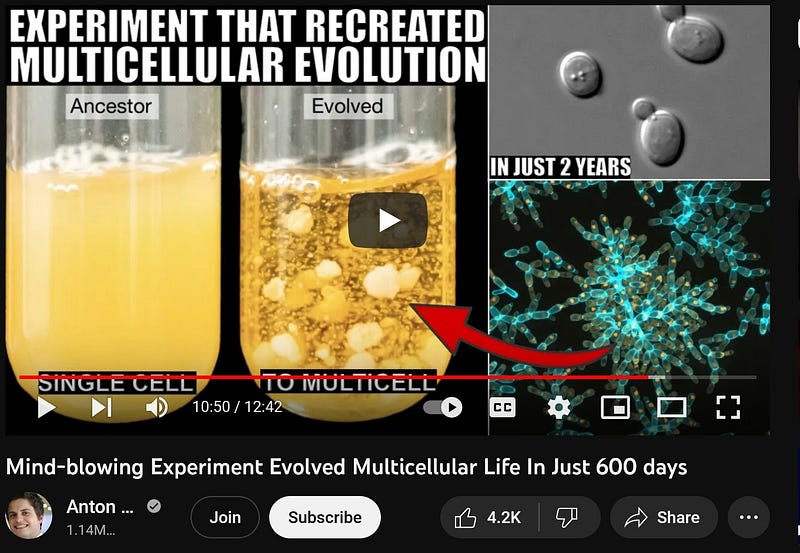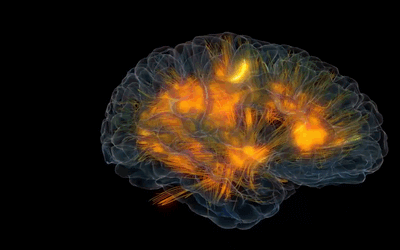Exploring Life, Death, and Cosmic Connections
Written on
Chapter 1: The Nature of Existence
Life and death are intertwined concepts that raise profound questions. Consider this: if cells didn't undergo death, multi-cellular organisms would appear remarkably different. Humans, for instance, might have webbed hands or even tails, if not for the programmed death of certain cells.
If there's a design for cellular demise, could it apply to us as well? This thought crossed my mind today, sparked by recent scientific advancements in creating multicellular life in laboratory settings. As these structures form, some cells intentionally perish. How do they know when to do this? What communication occurs between cells? Is there a 'master cell' orchestrating the fate of others? Might this parallel the dynamics within human society?

Mind-Blowing Science: Multicellular Life in 600 Days
Atoms have an existence far beyond human timelines. The components within cells, such as organelles, can function indefinitely if their environment remains stable. If we could artificially sustain that environment, these organelles could operate as perpetual machines.
So, why do cells die? It’s because they are programmed to do so. Cells that evade this process often become cancerous. All organisms, along with their systems, converge to form more complex systems. The study, as explained by Anton, revealed that scientists struggled to organize cells beyond a certain size until they deprived them of oxygen. This deprivation seemingly compelled the cells to cooperate to preserve overall life.
Language plays a crucial role in how we perceive these phenomena. My interpretation may not fully capture the scientific nuances; it might imply a higher intelligence guiding cellular selection processes. Perhaps a chemical signal prompts some cells to self-terminate, or maybe there's a mechanical process behind the randomness of cell death.
However, it’s likely not as random as it appears. Humans don’t possess tails or webbed fingers because specific cells are destined to die. Over time, successful organisms may have encoded this information in their DNA, allowing future generations to maintain similar cell death rates. Epigenetics suggests that trauma can be inherited, indicating our ancestors may have passed down more than we realize.
I also appreciate the philosophical idea of "as above, so below." Humans possess consciousness and a subconscious. From a systems perspective, we may also share a collective unconscious. Sociologist Émile Durkheim demonstrated that suicides are not arbitrary; rather, they are influenced by cultural factors that can be statistically calculated.
What if humanity operates within a structured framework? Presently, we have adopted a colonial mindset regarding land use. Eventually, the constraints of our planet may drive us to either explore outer space or evolve new social structures and abilities.
While war has historically been a means of organizing societies and distributing resources, this method may become obsolete as destructive capabilities increase. Overpopulation could hinder humanity's progression to the next evolutionary stage.
Furthermore, technological advancements have exposed the inadequacies of our old communication methods. We must develop new frameworks or risk collapse.
Next-Level Planets: Cosmic Influences on Life
Evidence suggests Mars may have once supported life, and some scientists speculate that Martian life could have seeded life on Earth. What if Mars had to perish for Earth to flourish?
People often mention Planet X's influence on Earth, but have you considered the myriad stars that might have shaped our solar system? There was a time when a star could have been so close to our sun that Earth experienced a double sunset, reminiscent of something from Star Wars. Schol's Star and its brown dwarf companion traversed the Oort Cloud, a vast region surrounding our sun.
Stars, too, have lifecycles. Without their deaths, our existence would be improbable. The elements in our bodies, including gold used in electronics, are remnants of ancient stars. Our sun connects us all through an electric field, weaving the solar system together.
We are not mere flotsam in space; this system appears to possess intelligence. The human brain, remarkably organized, resembles universal structures that link our galaxy. Fast Radio Bursts may be akin to electrical impulses recorded in brain mappings.

Be Prepared for Cosmic Adventures
If stars were to approach us closely and we were ready, humanity could potentially relocate to another star system every 100,000 years. This perspective reshapes our understanding of events like those depicted in "When Worlds Collide." It raises questions about historical migrations—were they from Mars to Earth, or from another star to our sun?
The concept of Noah's Ark may seem impractical as a wooden vessel carrying all life forms. However, envisioning a sophisticated mothership housing embryonic life forms becomes more plausible when viewed through a modern lens.
Life, in its essence, is intelligent. Plants communicate and share resources. Trees will even reposition their branches to allow saplings access to sunlight. Sometimes, older trees may die so that their offspring can thrive.
If you occasionally ponder these ideas from a broader perspective, it is not a flaw. Just as heart and liver cells focus on their individual tasks, we often engage in our daily routines, striving to do our best. This is a demonstration of trust.
In truth, every cell in our bodies understands its role, and when things go awry, it is often due to our inability to relinquish control and trust the universe’s wisdom.
Cells die, and ultimately, we all will. Interestingly, many who experience near-death moments report hearing, "It’s not your time yet," suggesting an underlying intelligence at work. Perhaps there exists a greater wisdom guiding the cycles of cells, individuals, and planets, and our role is simply to live authentically.
So, what should we focus on? Love, live, and seek happiness.
Chapter 2: Engaging with Cosmic Consciousness
The first video, "EVERYBODY DIES, BUT NOT EVERYBODY LIVES (2023)," explores the delicate balance of life and the importance of truly experiencing existence. It raises questions about what it means to live fully, beyond mere survival.
The second video, "Type O Negative - Everything Dies [OFFICIAL VIDEO]," serves as a poignant reminder of mortality and the beauty that exists within impermanence. It invites viewers to reflect on the cycles of life and death in a musical context.